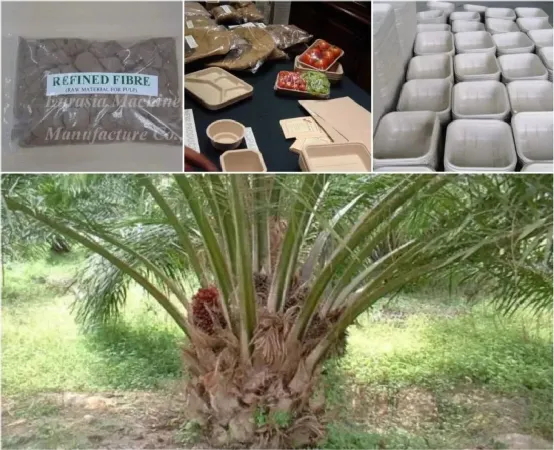Pulp molding raw material 1: bamboo pulp
Bamboo pulp is an excellent raw material for pulp molding (plant fiber molding) products. Bamboo fiber belongs to the category of medium to long fibers, with properties between coniferous wood and broad-leaved wood. It mainly produces high-quality workwear products, with a small amount added to tableware products.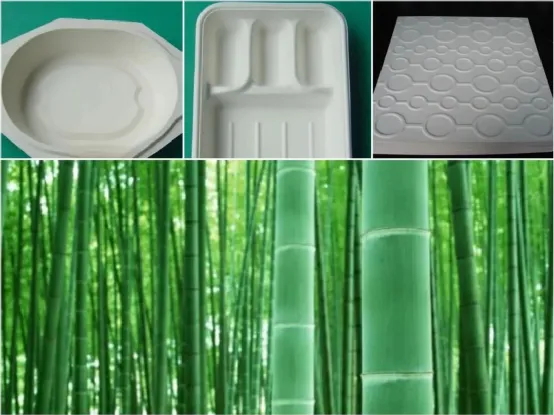
Paper pulp molding raw material 2: bagasse pulp
Bagasse pulp is an excellent raw material for pulp molding products. The production of pulp molded lunch boxes and tableware products often uses sugarcane bagasse fiber. Bagasse pulp is made from sugarcane bagasse through chemical or biological pulping.
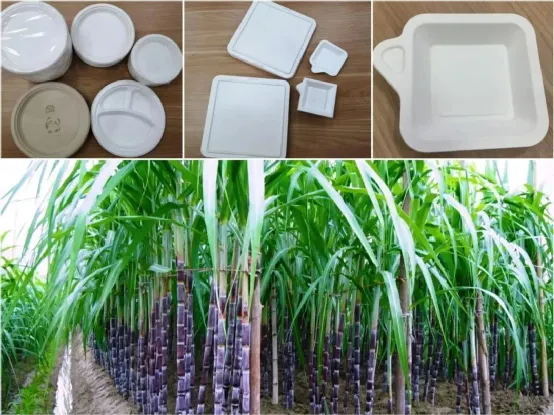
Pulp molding raw material 3: wheat straw pulp
Wheat straw pulp, divided into mechanism fiber wheat straw pulp, chemical mechanical wheat straw pulp, and chemical wheat straw pulp, mainly produces tableware products.
Wheat straw pulp has short fibers, and the surface of wheat straw pulp molded products is smooth and delicate, with good stiffness. The products are very brittle but have poor flexibility. Most pulp molded tableware products can use 100% wheat straw pulp as raw material.
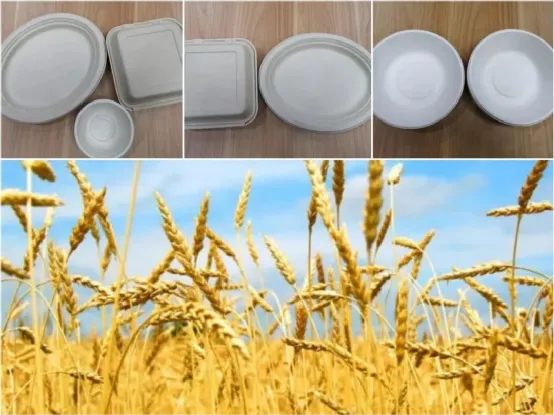
Pulp molding material 4: Reed pulp
Reed pulp fibers are short, and the surface smoothness of reed pulp molded products is not as good as that of bagasse pulp, bamboo pulp, and wheat straw pulp products. The stiffness is average and not as good as bagasse pulp, bamboo pulp, and wheat straw pulp; Reed pulp molded products are relatively brittle and have poor flexibility; Reed pulp contains a lot of impurities. Most pulp molded tableware products can use 100% reed pulp as raw material.
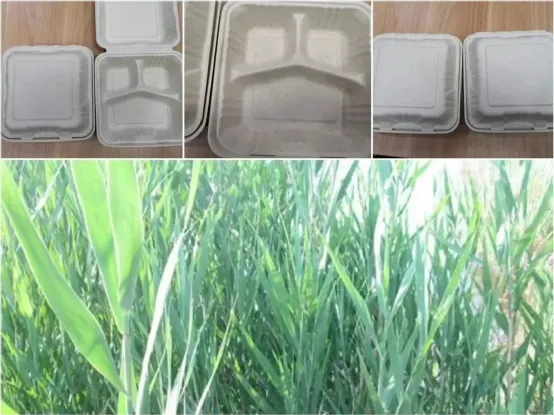
Pulp molding material 5: Wood pulp
Wood pulp is also a raw material for producing pulp molded products, mainly used for producing high-end industrial packaging products.
Wood pulp is mainly divided into coniferous wood pulp and broad-leaved wood pulp. The wood pulp used to produce pulp molded products is generally a combination of coniferous wood pulp and broad-leaved wood pulp, each accounting for a certain proportion. Coniferous wood pulp has long and fine fibers, relatively pure wood pulp, and few impurities. Hardwood pulp fibers are coarse and short, and contain a lot of impurities. The finished product has relatively low strength, is relatively loose, has strong absorption performance, and high opacity.
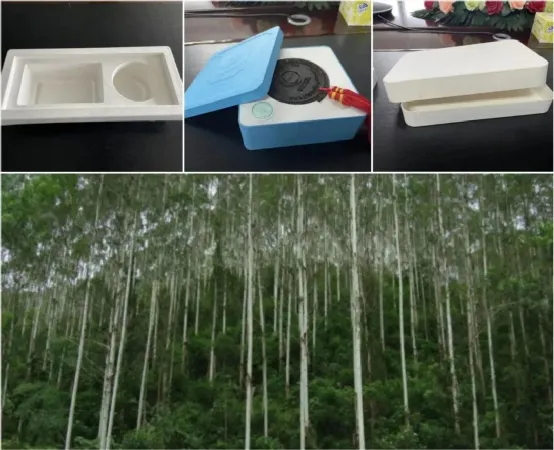
Pulp molding raw material 6: Palm pulp
Palm pulp is also a good raw material for pulp molding products. Palm pulp is mostly natural (primary color) pulp, mainly used in the production of tableware products. Palm pulp molded products have a beautiful appearance, good stiffness, and natural plant fiber colors. The length of palm fiber is similar to that of wheat straw pulp fiber, but the yield is higher than that of wheat straw pulp. Although there are many impurities in palm pulp, these impurities are also plant fibers, so palm pulp products look beautiful, natural, and environmentally friendly. It is a very good environmentally friendly product.
Paper pulp molding raw material 7: Waste paper pulp
Ordinary waste paper pulp molded (plant fiber molded) products refer to molded products made from yellow pulp, newspaper pulp, A4 pulp, etc. in cardboard boxes, with low hygiene requirements and low prices. Commonly used egg trays, fruit trays, and inner cushioning packaging are usually made from these materials.

Pulp molding raw material 8: Cotton pulp
Cotton pulp pulp molded (plant fiber molded) products are products produced and processed using only cotton stalks and the middle tissue of the cotton stalks after removing the surface layer. Cotton stalk fiber molded products have relatively fluffy fibers and poor stiffness, and are mostly used in low-end papermaking.
Pulp molding raw materials 9: Agricultural and forestry waste chemical pulp
Agricultural and forestry waste pulp molding (plant fiber mold) machine grinds fiber products, using the method of grinding to disperse plant fiber raw materials into fibers under the action of mechanical force. The pulp produced by this method is called mechanical pulp. The machine model fibers have not separated from lignin and cellulose, and the fiber bonding strength is poor. Chemical pulp or chemical pulp should be used in combination. The amount of machine model fibers added should not exceed 50%, as products with more than 50% are more prone to chip shedding.
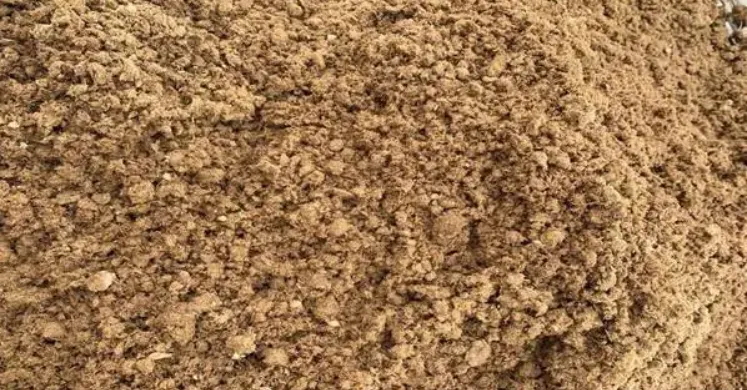
Paper pulp molding material 10: Chemical pulp
Chemical pulp pulp molding (plant fiber molding) products. Chemical mechanical pulp refers to a pulp that undergoes certain chemical treatments before grinding, and the resulting pulp is called chemical mechanical pulp. Chemical mechanical pulp generally contains higher lignin and cellulose components, lower hemicellulose components, and higher pulp yield. This type of pulp is mostly used in mid-range molded products, with a higher cost than mechanical pulp and lower cost than chemical pulp. Its bleaching, hydration, and water filtration properties are relatively similar to mechanical pulp.
Post time: Jul-26-2024


